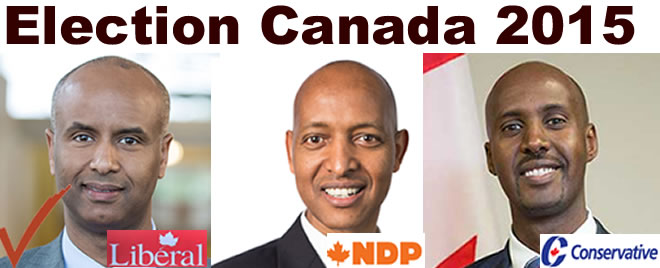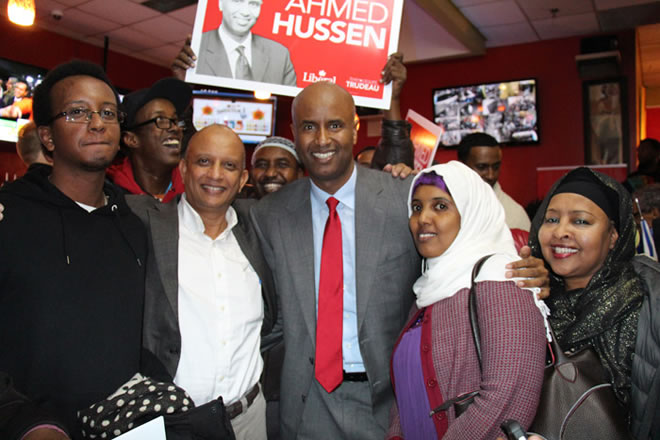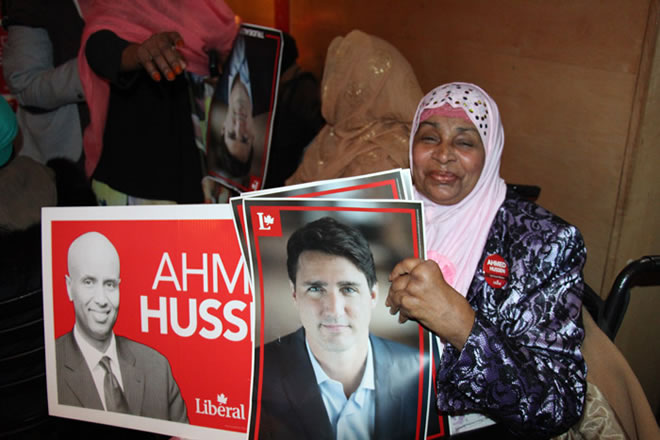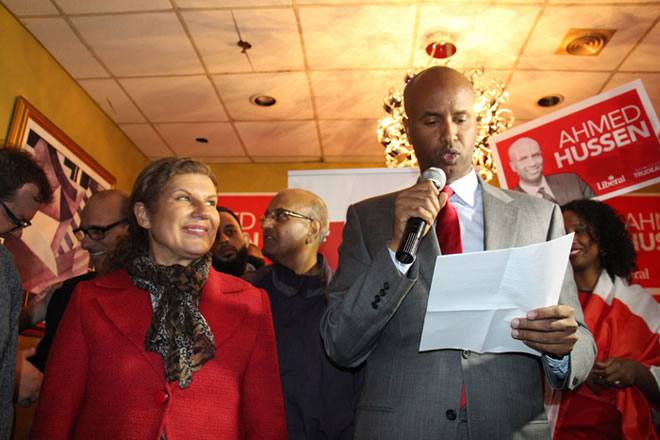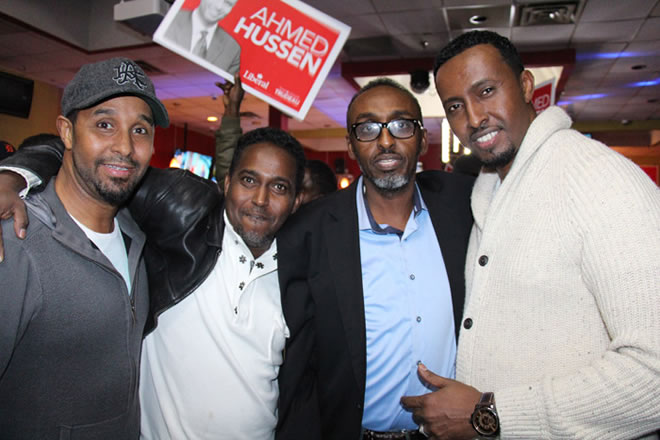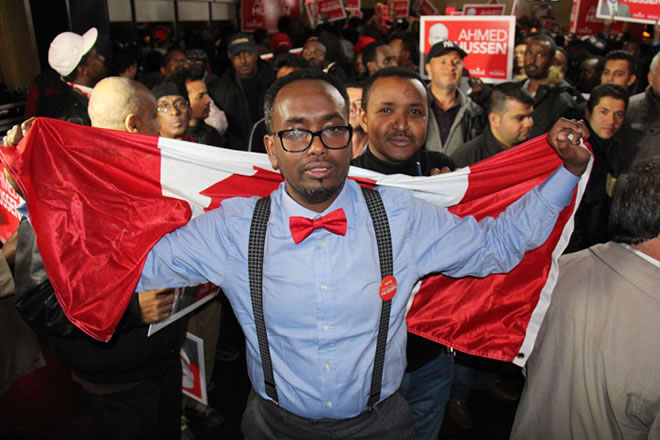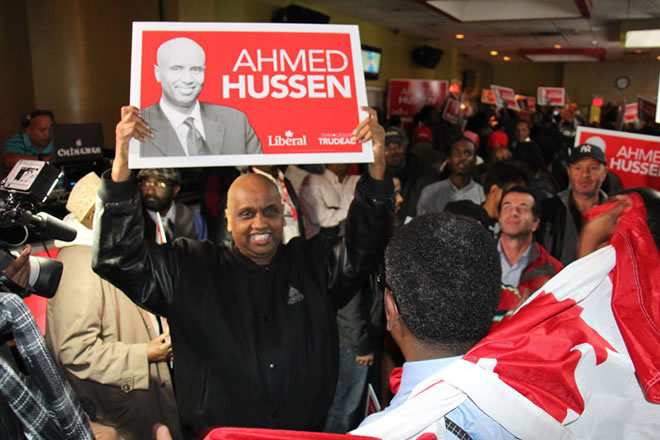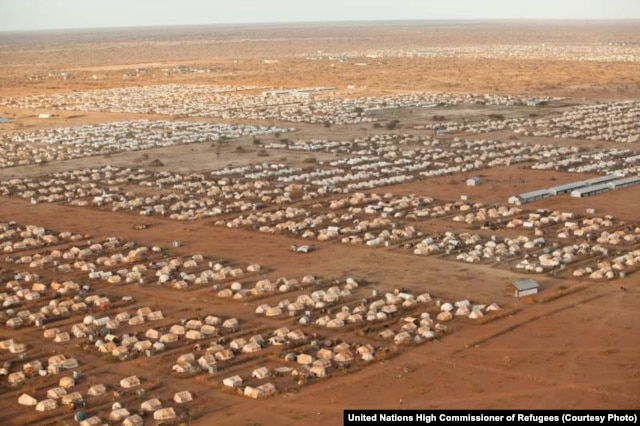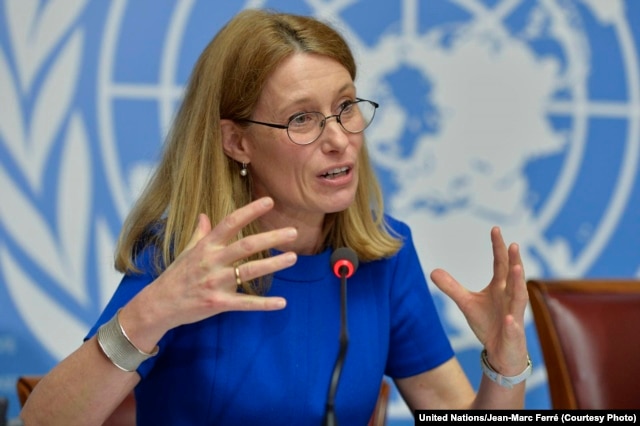Two Somalian refugee claimants crossed the border into Canada the hard way this week -- in the Red River.
On Wednesday, Yahya Samatar, who was shivering and soaking wet, climbed out of the Red River in Emerson, and into the pickup truck of a Good Samaritan who cranked up the heat, gave him a sweater and called 911.
"I didn't know where to go," said Samatar, a 32-year-old English-speaking aid worker from Somalia. In an interview with the Free Press Thursday, he said he and a companion were dropped off just south of the Canadian border crossing after midnight Tuesday. "I saw the lights of the port" at Emerson, he said. They were both afraid U.S. border patrols would pick them up and send them back to Somalia, so they headed for the bush.
"I crossed the farms and saw the bushes. I went in the bushes and saw the river."
Disoriented and in the dark, they figured the river ran east to west rather than south to north and, if they waded across it, they'd be safe in Canada, he said.
His companion entered the river with a backpack containing Samatar's wallet and phone. He was quickly swept up by the current and carried downstream, he said.
"I wasn't seeing him," Samatar said. He thought his friend had drowned. "I didn't hear him calling my name."
By that time, Samatar had already taken three steps into the mighty Red. Realizing it wasn't a lazy river they could just wade across, he scrambled back up on the bank.
"I slept in the bush." In the morning, he took a chance. "I thought I could cross if I left my trousers and shoes behind."
He learned to swim as a kid growing up in Kismaayo, a port city south of Mogadishu on the Indian Ocean, but he was not prepared for the cold, fast-moving river.
After two or three terrifying minutes in the water, Samatar said he swam back to shore and pulled himself out of the river. Shivering and shoeless, wearing nothing but shorts and a T-shirt, he walked into Emerson. "I didn't know if I'm in Canadian territory," Samatar said.
"I met a guy parking a truck... He was shocked by me when he saw my condition... He was a very nice guy." He told Samatar he was in Canada, gave him a sweater, put him in the cab of his truck with the heater running full blast and called 911. Paramedics and RCMP arrived.
After determining he wasn't hypothermic, Samatar was arrested, handcuffed, draped in a blanket and taken to the Canada Border Services Agency office nearby.
"They gave me food and trousers and a sweatshirt -- they gave me what they had."
The refugee claimant was interviewed, photographed, fingerprinted and given an October date for an Immigration and Refugee Board hearing. Then he was released.
But with no money, no one to call to pick him up, and nowhere to go, Canada Border Services Agency officials called Welcome Place in Winnipeg to get help for Samatar. Their offices had already closed, so they called Hospitality House Refugee Ministry. It handles private sponsorships of refugees, not refugee claimants, but their settlement manager jumped in her car and drove south to Emerson to get Samatar and put him up at Hospitality House residence in Winnipeg.
On Friday, Samatar learned his friend made it out of the river, hitchhiked to Winnipeg and was on his way to Toronto to make a refugee claim there.
Hospitality House settlement manager Karin Gordin took him to Welcome Place to fill out paper work for his refugee claim and to check in with the Canada Border Services Agency at The Forks.
"They were impressed with his English," Gordon said. "They told him he might have a future as an interpreter working for them."
Samatar hopes he's at the end of what has been a year-long survival odyssey.
He fled Somalia in August of last year when he became a target because he does aid work with a non-governmental organization and had no one to protect him.
"There's no functioning government," Samatar said. "As long as your clan has not a lot of power, you're at risk." Militia groups and Al Shabaab are active and night-time attacks are common, he said.
Samatar said he and his family scraped together US$12,000 to pay smugglers to get him to Ethiopia, then Brazil, and help him make his way by land through Central America to the U.S. border at Matamoros, Mexico. "I took buses and walked in the jungle for one month," he said.
In the U.S., he was apprehended as an illegal alien and spent six months in a detention centre in Texas and another 10 weeks in a centre in Louisiana. After his refugee claim was formally rejected, he was released to await deportation back to Somalia. Desperate to set down roots in some place safe, he headed north. A contact in Minneapolis's huge Somali community rented a car and drove Samatar and his companion close to the border crossing at Pembina, N.D., he said.
In Canada, the kindness of strangers has been a shock to his system, he said. He feels welcome and hopes to make this his home.
"I want to upgrade my education and get a job to support my family," said Samatar, who is married to a journalist who also fled Somalia. She is in Kenya with their baby and their three older children are with Samatar's mother.
"Hopefully, my asylum is accepted, and I can sponsor them."
carol.sanders@freepress.mb.ca

